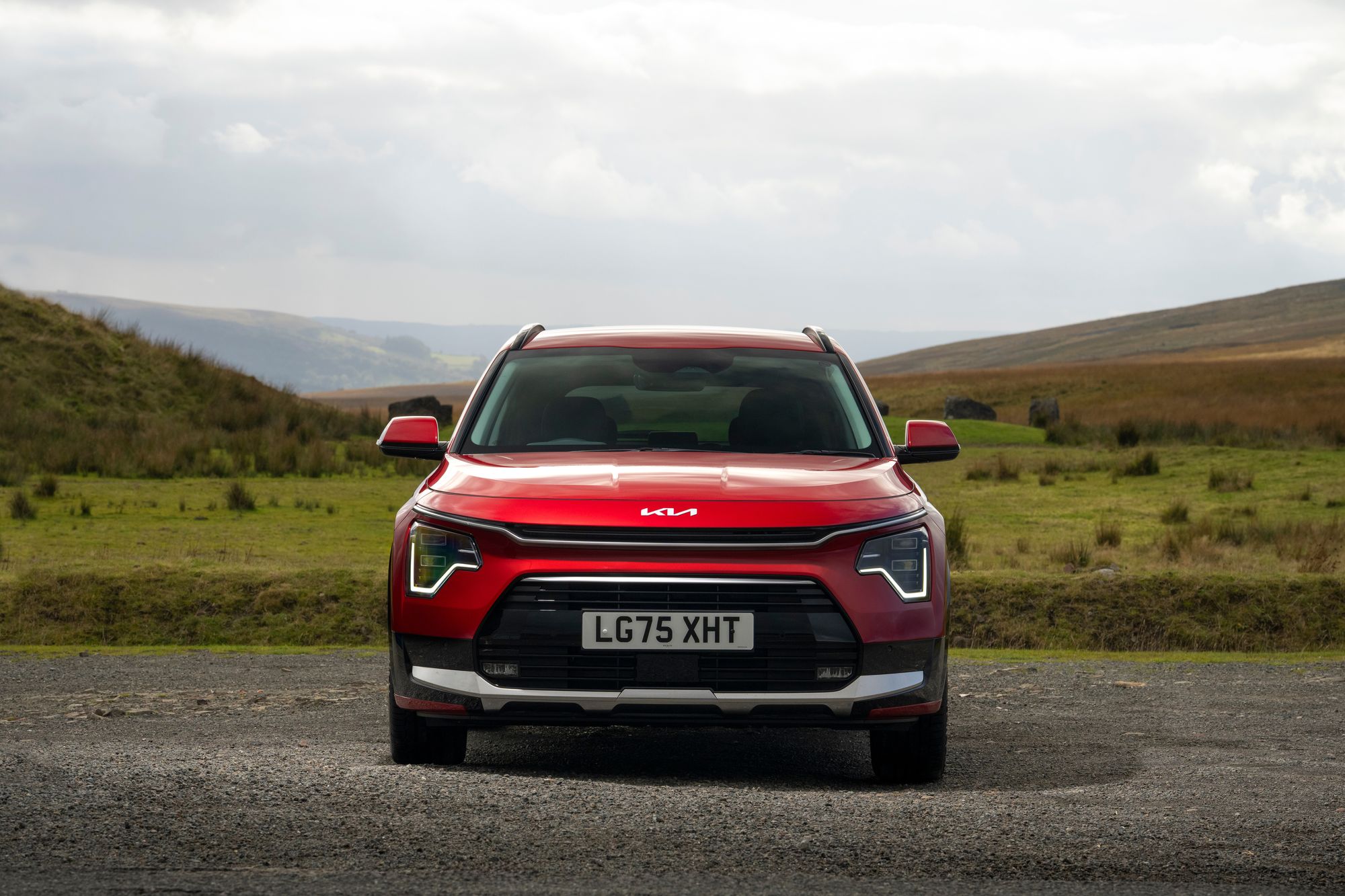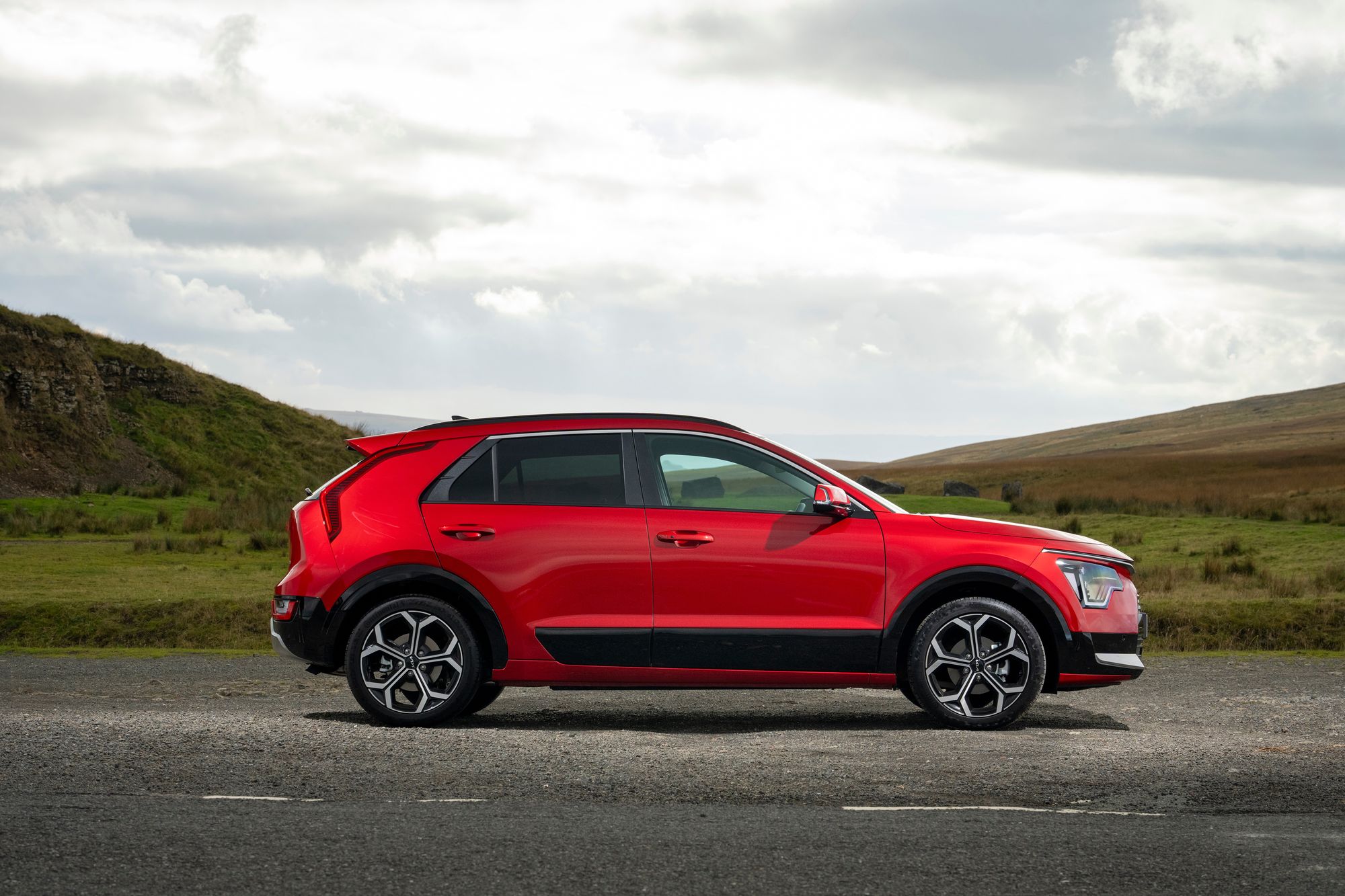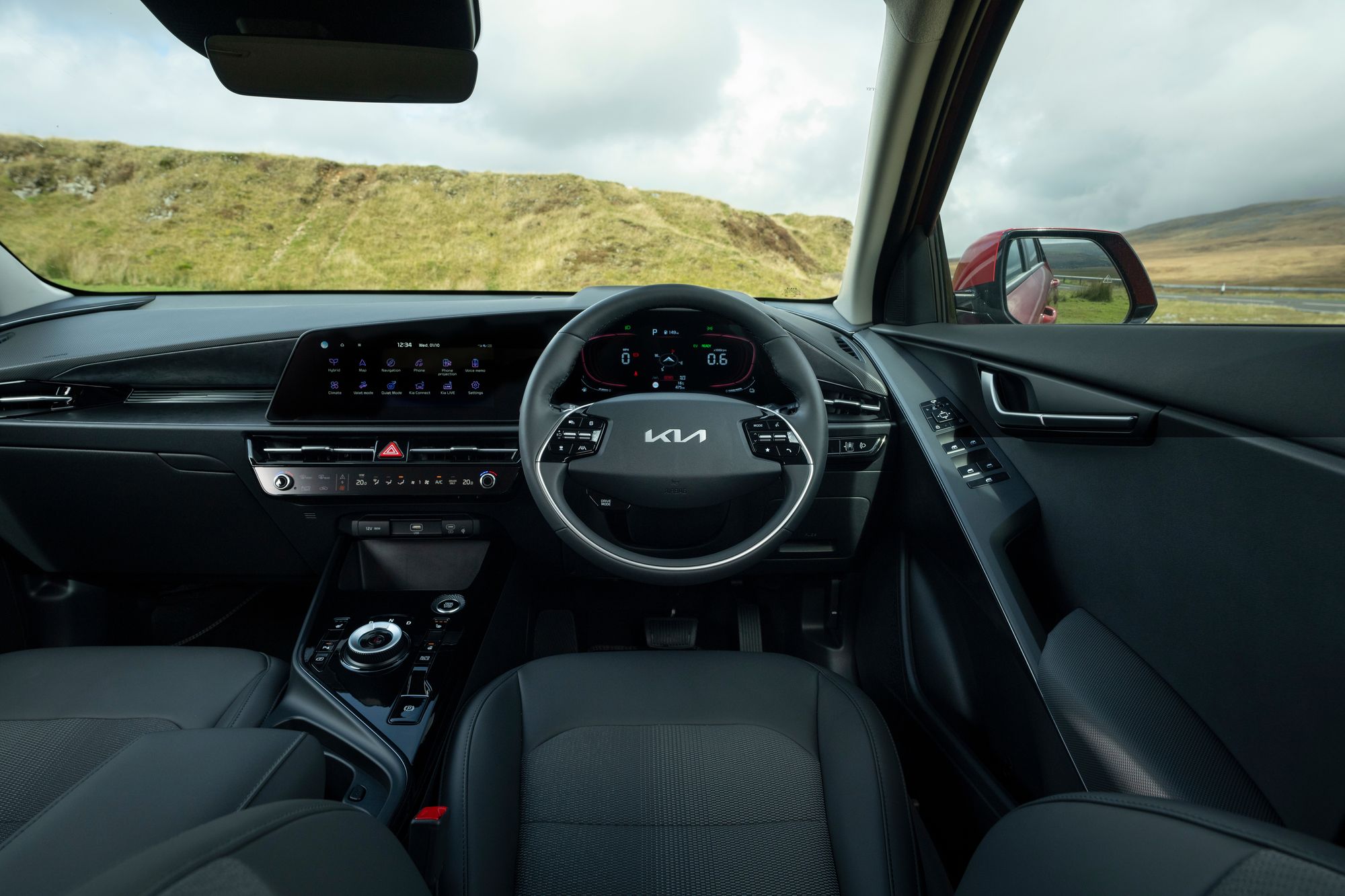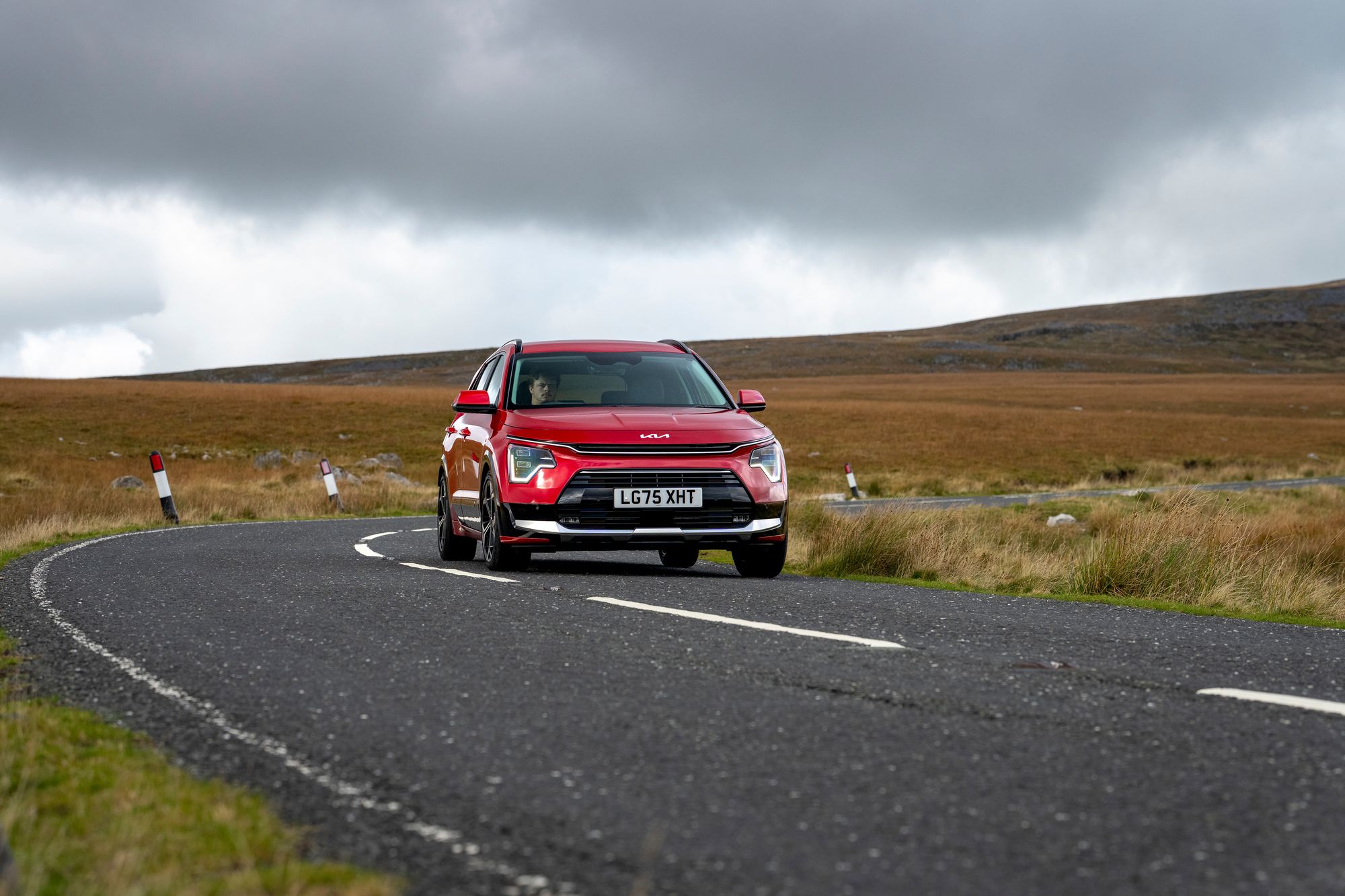
Kia has an ever-growing range of electrified cars in the UK. These include the flagship EV9 large electric SUV and more recent EV3 small electric SUV – both World Car of the Year winners – along with the established EV6, upcoming EV5 and EV4, and hybrid versions of its top-selling Sportage.
The Kia Niro plug-in hybrid is an interesting proposition, though. Kia’s small family SUV offers a choice of three powertrains – hybrid, plug-in hybrid and electric. The Niro plug-in hybrid is presented as a direct alternative for those not yet ready to go fully electric, but who want more EV capability than a regular hybrid. Indeed, for some, it could be the car that convinces them fully electric really can work.
It doesn’t have many direct rivals. Currently, most plug-in hybrid SUVs are larger models, roughly measuring around 200mm longer than the Kia. Its sister car, the Hyundai Kona, isn’t offered in plug-in hybrid guise, nor is the Dacia Duster, and nor is the Volkswagen T-Roc – even in upcoming all-new guise.
Really, the only direct rival to the Kia Niro is the plug-in version of Toyota’s C-HR – and that starts from prices roughly £5,000 more than the Kia. Unless, that is, you count the quirky Mazda MX-30 R-EV. Which we don’t.
As with other Niros, the plug-in hybrid has bold, chunky styling that I find very appealing. It’s available in a lovely range of colours, and you can get contrast paint finishes that see the rear pillars finished in gleaming black metallic.
Equipment levels are good, the Kia Niro is roomy inside, and while the boot could be bigger, it’s still a practical shape. You won’t discover any nasty surprises during a test drive, either. It’s not the most thrilling of cars, but it’s capable and comfortable, and a seven-year warranty shows it’s built to last, too.
How I tested
I’ve driven the Kia Niro on both sides of the Atlantic. I first drove it in Los Angeles, on the city’s busy freeways and winding mountain roads. I then tested it for an extended period here in the UK, in colder weather and somewhat less awe-inspiring (but more real-world) roads.
Kia Niro: From £34,545, Kia.com

- Pros Plug-in hybrid capability in a class full of regular hybrids, strong design, competitive prices
- Cons Battery and range could be a touch bigger, boot size is so-so, dark interior
Kia Niro Specs
- Price range: £34,545 – £39,545
- Battery size: 11.1kWh
- Maximum EV range: 40 miles
- Engine: 1.6-litre petrol
- Claimed battery & engine range: Around 450 miles
Battery, range, charging, performance and drive
The Kia Niro plug-in hybrid pairs a 1.6-litre petrol engine with an electric motor and underfloor battery pack. Performance isn’t earth-shattering, with 0-62mph acceleration in 9.6 seconds, but that’s not the raison d’etre of cars like this. At least it’s a useful second and a half faster than the regular Niro hybrid.
Under the boot floor is an 11.1kWh battery. That’s a little smaller than some more recent plug-in hybrids, but it’s still enough for a WLTP range of 40 miles (call it 25-30 miles in the real world). You could have more miles, but the bigger battery would cost you – remember, the Niro is £5k cheaper than its Toyota C-HR arch-rival.
Claimed fuel economy of 313mpg is entirely a quirk of how the official mpg test is conducted, rather than a realistic everyday figure. But still, with a 37-litre fuel tank, a realistic everyday range of around 450 miles shouldn’t be impossible.

The Kia Niro plug-in hybrid doesn’t offer any speedy DC rapid charge functionality. You there won’t be able to stop for 15 minutes or so and fully replenish the battery. If you have an AC wall box, it will take around three hours to charge.
Keeping the battery topped up means more time running in silent EV mode. The smoothness gives the Niro a modern feel. It becomes noisier when the engine starts up, though. Without the benefit of a turbocharger, it sometimes have to be worked hard, which can be noisy. The six-speed automatic gearbox can also be hesitant. This can spoil the sophisticated feel.
The ride is OK, particularly in ‘2’ grade, which has more compliant 16-inch alloy wheels. ‘3’ and ‘4’ models, with their 18-inch wheels, can feel a bit busier at times, with more bumps and thuds from the road surface.
While the Kia Niro handles safely, with plenty of electronic aids, it’s not a particularly engaging car to drive. Secure and capable is the name of the game, rather than any back-road dynamism.

Interior, practicality and boot space
The Kia Niro has quite a modern feel inside. The wraparound dashboard is smart, and I like the ‘floating’ window controls on the driver’s door arm rest. It perhaps is showing its age compared to the more modern and open-plan Kia EV3, though. The unrelenting black colourscheme makes it feel gloomy inside, too. Some might also find the climate control panel a bit tricky. It’s a ‘dual purpose’ touch display, controlling both audio and climate. You press a button to flick between the two; this button could be much clearer.
It’s a very practical car for passengers, though. Both front and rear seats are easy to access, with plenty of space. Growing families won’t have any complaints. You even get heated rear seats in ‘4’ grade, giving a luxury touch.
The boot could be better, though. Because the battery is mounted under the boot floor, it is restricted to 348 litres, which is a fair bit smaller than a Volkswagen Golf hatchback. There’s no underfloor stowage for the charging cables, either. All models do get a 60:40 split rear seat though, along with rear door bins and an armrest with cupholders. With the rear seats folded, boot space expands to 1,342 litres

Technology, stereo and infotainment
All Kia Niro have a 10.25in touchscreen. This is set within the dashboard, rather than being the less bulky freestanding screens seen in some newer models. It could be bigger and brighter, and the menus are looking a bit dated, but it features the essentials such as sat nav, Apple CarPlay and Android Auto.
Niro ‘2’ and ‘3’ versions have a 4.2-inch driver display, in combination with analogue dials. The ‘4’ sees this expand to a fully-digital 10.25-inch display. The top-spec Niro also gets a configurable head-up display, which is a nice feature in this sector.
Bluetooth features on all Kia Niro, and there’s a wireless charging pad on ‘2’ and ‘3’ grades. All models feature a reversing camera too, and the rear parking sensors on ‘2’ are joined by front sensors on the other two versions. The Niro ‘4’ has a clever remote parking assist system – you can move it in and out of parking spaces using the key fob, even if nobody’s sitting inside.
Surprisingly, there’s no premium sound system on any Kia Niro. It’s simply a regular six-speaker system for all variants.

Prices and running costs
Good value is a strength of the Kia Niro. Prices for the ‘2’ start from £34,545, which is tempting value for a plug-in hybrid. It’s less than £5,000 more than the regular hybrid – and if you’re a company car driver, the resultant 18g/km CO2 will save you a small fortune in benefit-in kind tax.
The bigger wheels and extra equipment of ‘3’ and ‘4’ models push the CO2 up slightly, to 21g/km and 22g/km, but there won’t be any impact on tax. The EV range dips slightly too, from 40 miles to 38 miles.
Insurance will be a couple of groups higher than the regular hybrid, but will still be lower than the Kia Niro EV. The Kia Niro also has superb retained values, which will help keep monthly PCP payments low. Then there’s the reassurance of the firm’s seven-year warranty!
Kia Niro rivals
- Toyota C-HR
- Dacia Duster
- Volkswagen T-Roc
FAQs
How long does it take to charge?
The Kia Niro’s 11.1kWh battery takes two hours 55 minutes to charge when using a 7.4kWh AC wall box.
How much does it cost – is it worth it?
There are not many plug-in hybrids that cost less than this. The Kia Niro is therefore an interesting stepping stone between regular hybrid models and a full EV.
Does Kia replace batteries for free?
The Kia Niro has a seven-year, 100,000-mile warranty, and this is extended to eight years and 100,000 miles for the Niro plug-in hybrid’s high voltage battery.
Why trust us
Our team of motoring experts have decades of experience driving, reviewing and reporting on the latest EV cars, and our verdicts are reached with every kind of driver in mind. We thoroughly test drive every car we recommend, so you can be sure our verdicts are honest, unbiased and authentic.
The verdict: Kia Niro
I’m a big fan of the Kia Niro plug-in hybrid. Sure, it’s not particularly thrilling to drive, but as an overall package, it ticks a lot of the right boxes. Being a plug-in hybrid sets it apart from many similarly-sized hybrid-only rivals, making it an interesting alternative to the smash-hit fully electric Kia EV3. I also think it looks great, with a choice of some fabulous colours.
Geely EX5 review: Sensational value SUV with a little help from Lotus
Best used electric cars 2025: Top 10 second-hand EVs to buy
Best electric cars 2025: Top 12 EVs to buy
Hyundai Ioniq 6 N review: The sports car for the PlayStation generation
Suzuki e Vitara review: Bags of charm, but behind the times on tech
10 best cheap electric cars: Affordable EVs worth ditching petrol and diesel for







